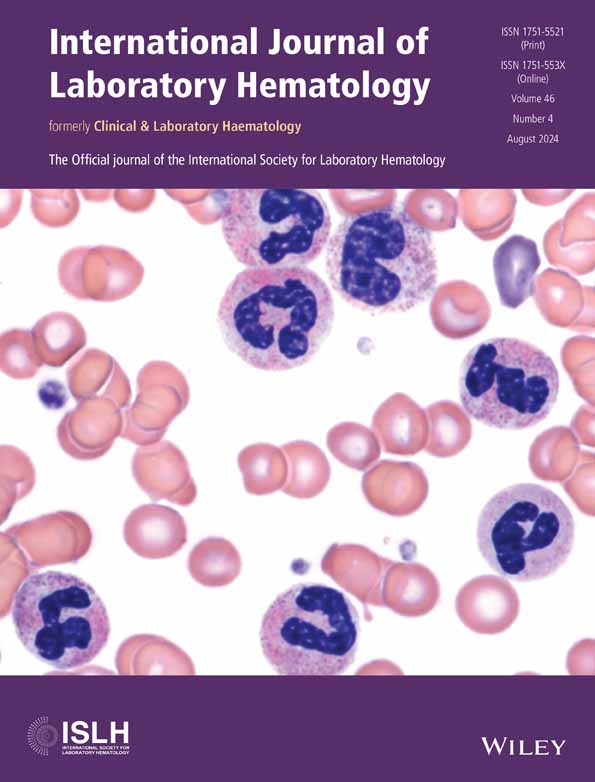The lupus anticoagulant titer is associated with elevated antiphosphatidylserine/prothrombin immunoglobulin-M isotype antibody levels
Study was performed in accordance with institutional guidelines for clinical research (Mayo Clinic Institutional Review Board).
Abstract
Background
Clot based assays used for lupus anticoagulant (LAC) detection are typically interpreted in a qualitative fashion and may not reflect LAC potency. In this cross-sectional study, we describe a method for quantifying the LAC titer using serial (dependent) two-fold dilutions in normal pooled plasma.
Methods
Serial dilutions of 51 residual plasma samples from 50 patients were tested using the Russell's viper venom screening time (DRVVT) and activated partial thromboplastin screening time (APTT) methodologies. The measured clotting times and the corresponding dilution factors were then used to derive a four-parameter logistic model. The LAC titer for each patient was interpolated as the sample dilution that corresponds to the upper reference interval limit of the corresponding assay.
Results
Calculated APTT and DRVVT LAC titers displayed a strong linear correlation (R2 = 0.84) between each other, but not with the degree of prolongation of the APTT/DRVVT screening time in the neat undiluted samples. Using data driven partitioning, patients could be grouped into low (<10) or high (≥10) DRVVT LAC titer. There were no significant differences in anticardiolipin (aCL) or anti-beta 2 glycoprotein 1 (aB2GPI) antibody levels or prevalence of thromboembolic events between low and high LAC titer groups. In contrast, antiphosphatidylserine/prothrombin (aPS/PT) IgM antibody levels, but not IgG, were significantly higher in the high LAC titer group.
Conclusions
The degree of prolongation of the APTT/DRVVT screening time is not correlated with the LAC titer. Only aPS/PT IgM antibodies levels were strongly correlated with the LAC titers. Additional studies are warranted to determine clinical implications of high LAC titers.
CONFLICT OF INTEREST STATEMENT
The authors declare no conflicts of interest.
Open Research
DATA AVAILABILITY STATEMENT
Data sharing is not applicable to this article as no new data were created or analyzed in this study.




